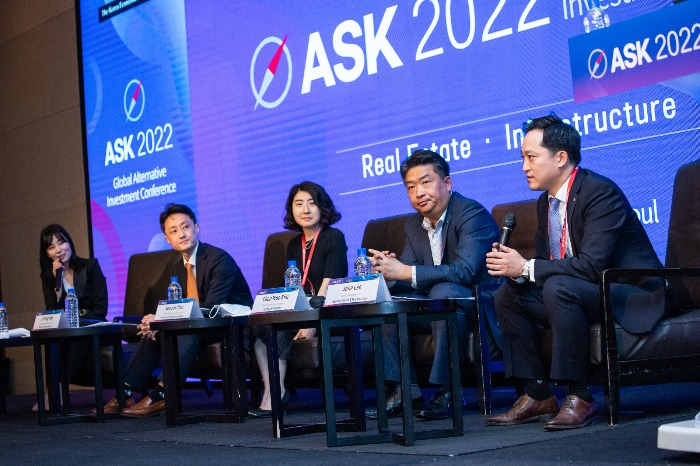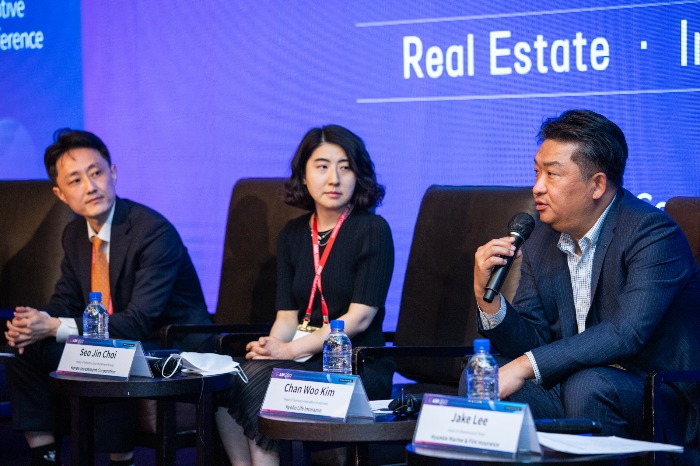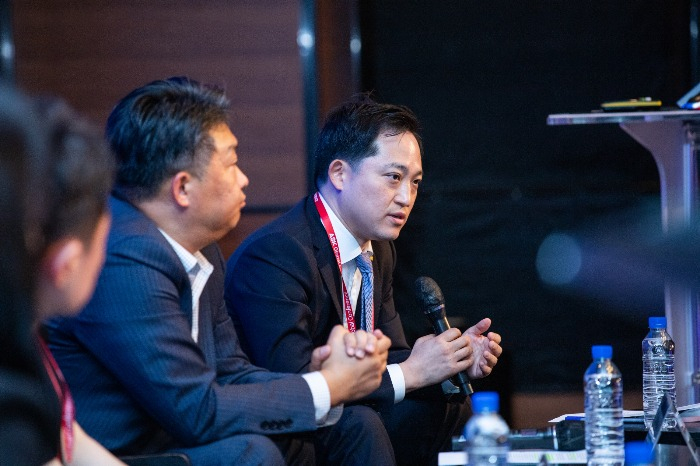ASK 2022
Infrastructure shines amid rising inflation, Korean LPs say
Investors are eyeing rapid growth of digital infrastructure and energy transitions, focusing on developed countries
By May 25, 2022 (Gmt+09:00)
5
Min read
Most Read
LG Chem to sell water filter business to Glenwood PE for $692 million


Kyobo Life poised to buy Japan’s SBI Group-owned savings bank


KT&G eyes overseas M&A after rejecting activist fund's offer


StockX in merger talks with Naver’s online reseller Kream


Mirae Asset to be named Korea Post’s core real estate fund operator



In The Korea Economic Daily's alternative investment forum ASK 2022, the LP panels from National Pension Service (NPS), Korea Investment Corporation (KIC), Kyobo Life Insurance and Hyundai Marine & Fire Insurance discussed their observations on the infrastructure market and their post-pandemic strategies. The panel session was moderated by Grace Kim, executive director of private capital advisory at Sera Global.
The panelists outlined their current assets under management and exposure to alternative and infrastructure investments.
NPS, the world’s third-largest pension fund with 948.7 trillion won ($750 billion) of AUM as of end-2021, allocates 119 trillion won in alternative investments where overseas infrastructure amounts to 22.5 trillion won. The pension fund focuses on core and core-plus strategies while looking for opportunities in value-add, said Ahn Ji-yong, infrastructure investment division head.
KIC, the world’s 14th-largest sovereign wealth fund is managing $205 billion in assets. Investing only in overseas assets, it allocates 17.5% of AUM in alternative investments where infrastructure amounts to 4.8 trillion won. The main targets include energy, telecommunications, transportation and renewables, said Choi Seo-jin, KIC’s infrastructure group head.
Kyobo Life, with 92.6 trillion won of AUM, invests 25 trillion won in alternative assets as of end-April. The insurer has ramped up the alternative investment proportion from 10% to 27% over the past decade, and the expansion rate of alternative assets will slow from 2022, said Kim Chan-woo, overseas alternative investment head. Infrastructure investment reaches 11 trillion won including 2 trillion won for overseas assets.
Hyundai Marine is managing 45 trillion won in assets as of end-2021 and alternative investment reaches 12 trillion won. Infrastructure amounts to 3.5 trillion won, where one-third is for overseas assets, said Lee Jong-kwan (Jake Lee), head of the infrastructure team.

The LPs shared some positive views on the macroeconomic effects on infrastructure and their investment plans accordingly.
Kyobo is considering expanding infrastructure debts as fixed-rate loans will increase their carry yield after reflecting the Fed’s rate hikes, Kim said. Also, the insurer is planning to increase infrastructure equities as they will have high exit value, compared with debts, in the low-interest-rate environment in the long term. The company will accelerate investments in core-plus and value-add assets as it doesn’t see high values in PPPs.
Inflation will ultimately bring positive effects to infrastructure, Hyundai Marine’s Lee said. Availability-based public-private partnerships (PPPs) are an example, which guarantee fee payments from the public authority to the private partner once the project is completed and ready to use, are set to raise earnings before interest, taxes, depreciation and amortization (EBITDA) in line with inflation, he explained. The insurer is taking more risks for higher returns by increasing core-plus and value-add investments amid the interest rate hikes, as well as focusing on positive cash flow generation in the long term.
As the core assets hedge against inflation, the macroeconomic risks won’t be very serious despite rate hikes’ negative influence on asset valuations, NPS’ Ahn said. Given that the economy will normalize in 2023 or later, the pension fund won’t pursue a drastic change in its return-risk profile of infrastructure, Ahn added.
NPS sees the energy transitions and digital infrastructure expansion as the biggest change in the market, and it will continue to increase investment in those sectors, Ahn said.
On fluctuations of dollar exchange rates, KIC will have little impact as its makes investments with dollars and has large exposure to the US. The exchange rate risk is diversified when making indirect investments in other regions as the investment period is three to four years. Direct investments, including co-investments, are concentrated in developed countries and investing in emerging markets is selective, KIC’s Choi said.

Lastly, the infrastructure investors shared their views on partnership with GPs.
Kyobo is investing in infrastructure funds with GPs and prefers asset managers with proven track records, well-established risk management and compliance systems, Kim said. The insurer targets a 10% return on overseas infrastructure equity funds, focusing on core-plus and value-add and increasing exposure to telecommunications and data centers.
Korean insurance companies will focus on re-up this year, where LPs in previous funds will commit to reinvesting in successor funds managed by the same GPs, and will selectively invest in funds with attractive risk-return profiles, Hyundai Marine’s Lee said. This is because Korean insurers will see a slowdown in the annual increase rate of their total assets under the new financial reporting standards, IFRS 17 and the new version of K-ICS, both effective in January 2023.
NPS sees a large number of blind pool funds focused on the US and Europe launch this year, as well as an increasing number of the APAC-focused funds. The pension fund is increasing energy transition and digital infrastructure investment, while keeping stable deal flows to the US and Europe. It eyes long-term growth potential in emerging markets but is taking a prudent approach to them, Ahn said.
KIC prioritizes keeping core and value-add investments and is looking for GPs specializing in these strategies as well as the mid-markets. Also, it is seeking GPs with expertise in digital infrastructure and energy transition in developed countries, Choi said.
Write to Ye-Jin Jun at ace@hankyung.com
Jihyun Kim edited this article.
More to Read
-
 Korean InvestorsRenewables emerge as LPs' top infrastructure sector
Korean InvestorsRenewables emerge as LPs' top infrastructure sectorMay 03, 2022 (Gmt+09:00)
3 Min read -
 Alternative investmentsTwo Korean LPs invest €90 mn in BlackRock's infra fund
Alternative investmentsTwo Korean LPs invest €90 mn in BlackRock's infra fundNov 04, 2021 (Gmt+09:00)
1 Min read -
 Alternative investmentsNPS and six Korean LPs commit $730 mn to Ardian's infra secondaries
Alternative investmentsNPS and six Korean LPs commit $730 mn to Ardian's infra secondariesDec 09, 2021 (Gmt+09:00)
1 Min read
Comment 0
LOG IN


